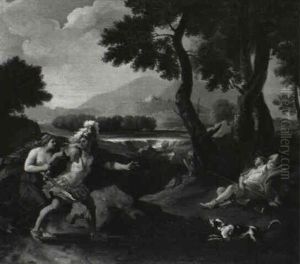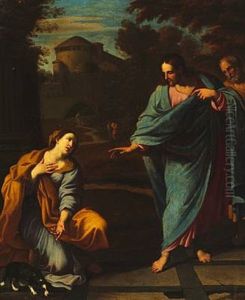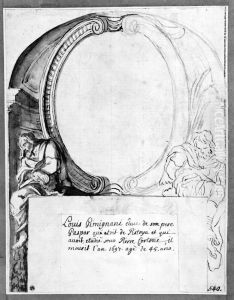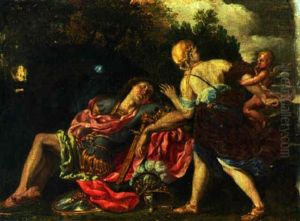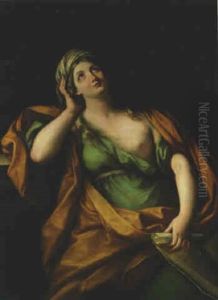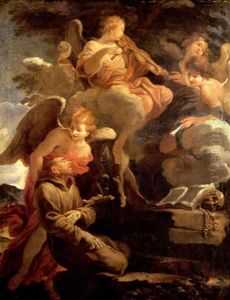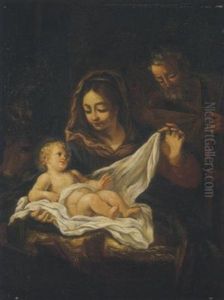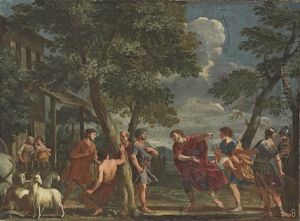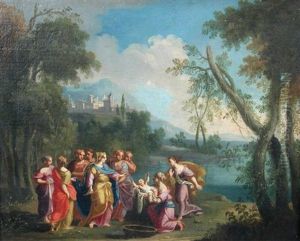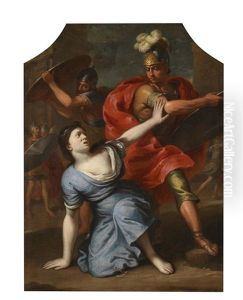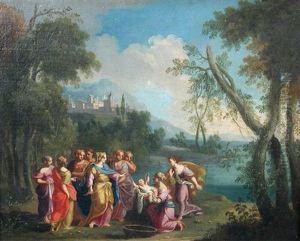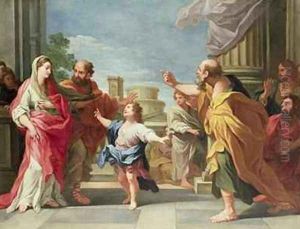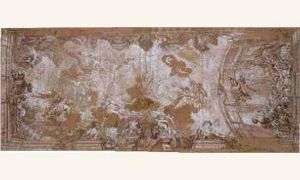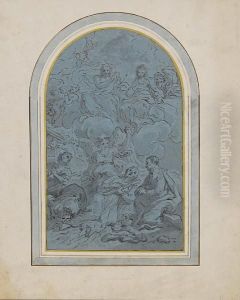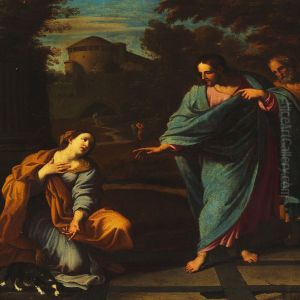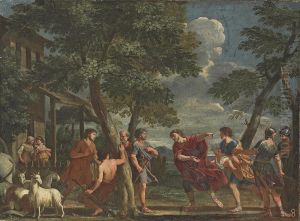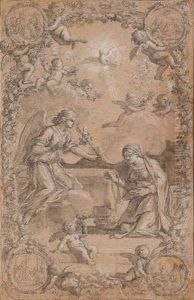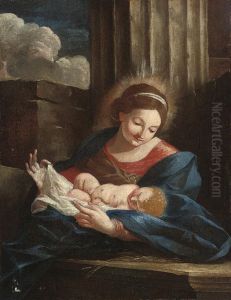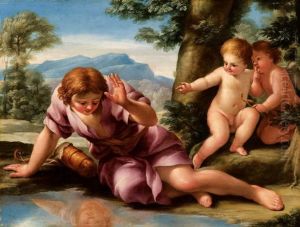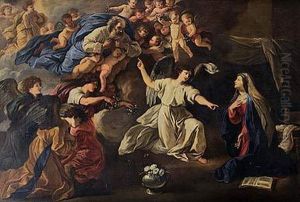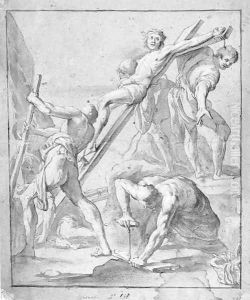Ludovico Gimignani Paintings
Ludovico Gimignani was an Italian painter active during the Baroque period, born in Rome in 1643. He was the son of the painter Giacinto Gimignani, from whom he received his initial training and artistic guidance. Ludovico's style was significantly influenced by his father, but he also drew inspiration from other prominent artists of his time, including the works of the Carracci family and Raphael, blending classical and Baroque elements in his paintings.
Ludovico's career was marked by both religious and secular commissions, showcasing his versatility as an artist. He was known for his narrative scenes, portraits, and altar pieces, which were celebrated for their emotional depth and vibrant use of color. His ability to convey dramatic intensity and his attention to detail were characteristics that set his work apart from his contemporaries.
In addition to painting, Ludovico was involved in the design of stage sets and was engaged in the broader cultural life of Rome. His work was not limited to Rome, as he received commissions from various Italian cities, indicating his reputation had spread throughout Italy.
Despite his success, Ludovico Gimignani's work was somewhat overshadowed by the more dominant figures of the Baroque period, such as Bernini and Caravaggio, and he has not been as widely recognized in art history as some of his contemporaries. However, his contributions to the Italian Baroque movement continue to be appreciated by art historians and collectors alike for their emotional expressiveness and technical skill.
Ludovico Gimignani died in Rome in 1697. His legacy lives on through his paintings, which remain on display in various galleries and churches in Italy, serving as a testament to his artistic talents and the depth of his contributions to the Baroque era.
